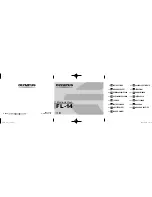
SkyRaider DS432 TEC User Manual
September 18, 2019
SkyRaider DS432 TEC User Manual
Page 169
Note that stacked and combined frame #10 represents information derived from
all 10 frames.
But hold on … we are not talking CCD imaging here –
this is video. When a CCD
chip is activated it cranks at full blast and requires effective cooling to prevent it
from rapidly heating up beyond a user-determined temperature. But video chips
work differently: they heat up slowly and progressively. This means that the first
frame of the series of 10 was taken at a lower chip temperature than the final
one. Therefore, each of the 10 frames records different levels of thermal noise. In
other words, when stored in the camera, these 10 combined frames represent a
library of information that the camera and software can now choose from and
use to CORRECT (note: not
« subtract from »
) the light image that we want to
display on our computer screen.
Now, how does this work in practice
–
and why is it called a
Dark Field
correction?
The
Dark Field
correction is prepared by the user at the beginning of an
observing session by covering the camera or scope, pre-determining the
exposure time and setting the software to automatically taking up to 10 images.
We all know our equipment and the skies we observe under (or we certainly will
with a bit of practice). We also have an idea of what range of filters we might
use that night and the effect they have with respect to exposure times. Take this
into account when selecting your exposure time for your 10 dark images.
But remember:
this is NOT a
Dark Frame
subtraction
–
the exposures required for
dark frame subtraction must be close to those used for the light frames of our
astro-targets. Not so for
Dark Field
correction. The camera and software in the
latter case are not looking for a single FRAME to subtract based on exposure
time. They are looking at the 10 combined frames to see which one has the noise
level that most closely matches the noise level in the light frame itself. In other
words, they are looking for a noise FIELD. The point here is that camera and
software will select the appropriate
Dark Field
for the correction, for both shorter
and longer light frame exposure times from the same
« library ».
In addition, unlike the single frame of a CCD dark frame, the images used for
Dark Field
correction are interlaced combinations of odd and even scan lines.
Apparently, this too factors into the fact that this correction removes ALL NOISE,
not just hot and warm pixels.
The important point to retain here is that, because of the stacking and
combining to form the library of images for the correction procedure, long light
exposures do NOT require similarly long exposures for the
Dark Field
correction
images. For example, a 2-minute light exposure using a narrow-band h-alpha
filter may still only require the user to prepare ten 30 second dark images for the
dark field correction. The precise numbers will vary with your equipment and
conditions.












































